Beijing + 25: the fifth review of the implementation of the Beijing Platform for Action in the EU Member States (Area B — Education and training of women: stereotypes and segregation persist)
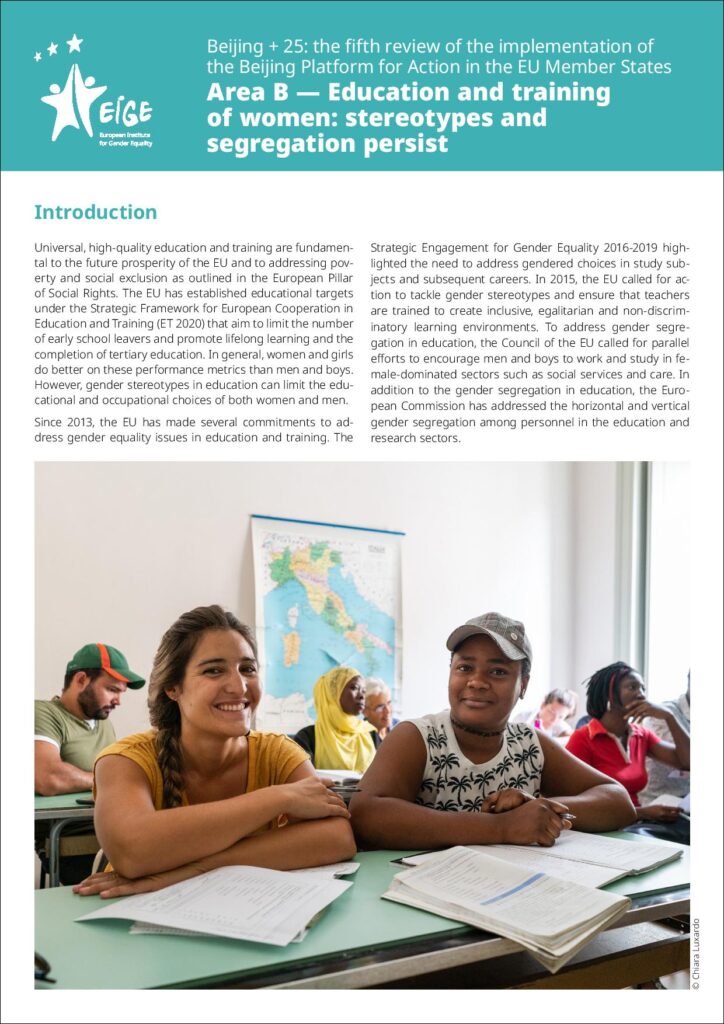
download: [gview file=”http://afakneswiah.org/wp-content/uploads/2020/10/20190443_mh0119040enn_pdf.pdf”]
Beijing + 25: the fifth review of the implementation of the Beijing Platform for Action in the EU Member States (Area A — Women and poverty: women at greater risk)
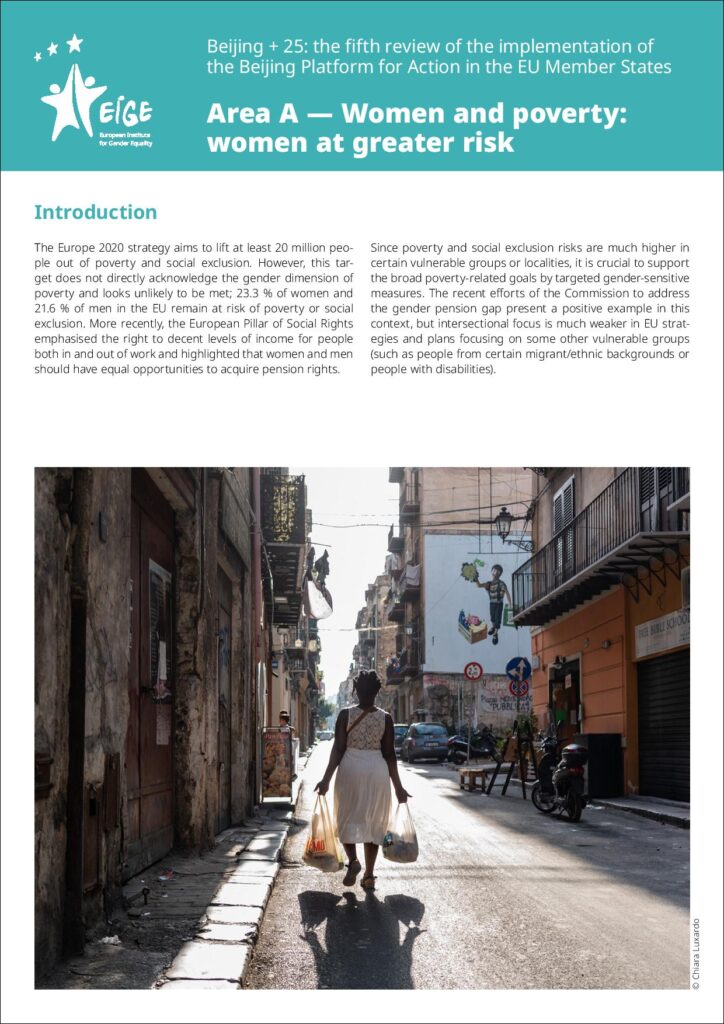
download: [gview file=”http://afakneswiah.org/wp-content/uploads/2020/10/20190441_mh0119039enn_pdf.pdf”]
Leaving no woman or girl behind: Trends in specific recommendations issued by the CEDAW Committee
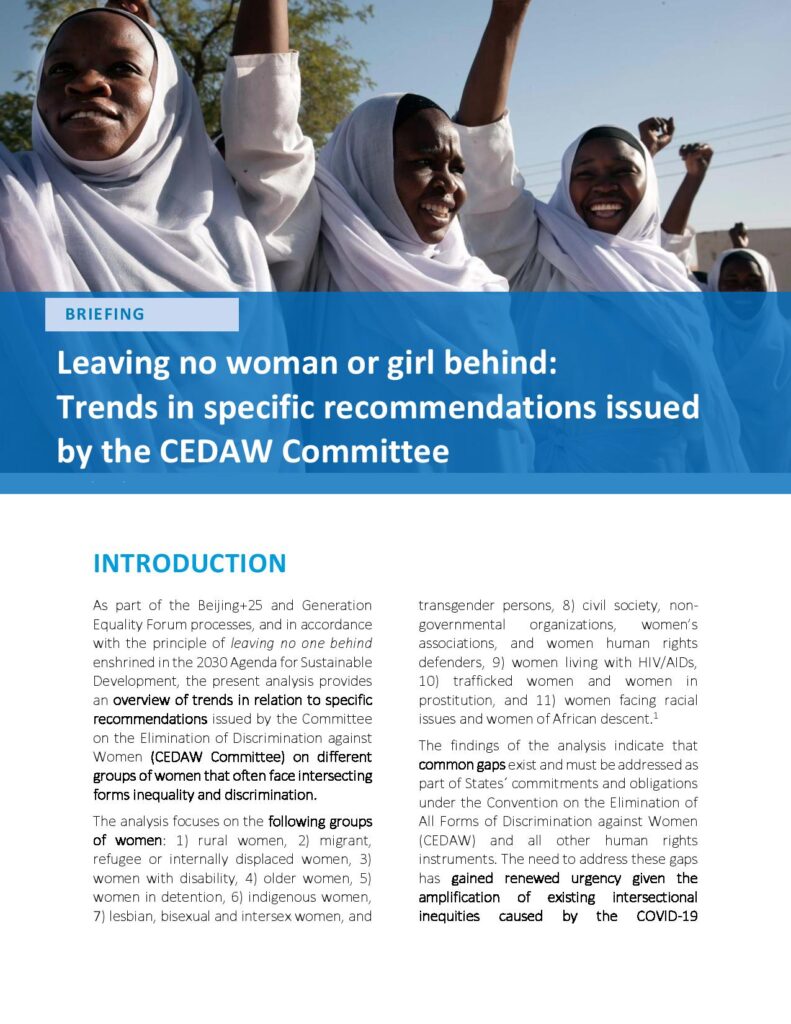
As part of the Beijing+25 and Generation Equality Forum processes, and in accordance with the principle of leaving no one behind enshrined in the 2030 Agenda for Sustainable Development, the present analysis provides an overview of trends in relation to specific recommendations issued by the Committee on the Elimination of Discrimination against Women (CEDAW Committee) […]
STRATEGY FOR GENDER EQUALITY AND THE EMPOWERMENT OF WOMEN (2018–2021)

The present Strategy for Gender Equality and the Empowerment of Women (2018–2021) establishes the first institutional framework on gender equality for the United Nations Office at Vienna/United Nations Office on Drugs and Crime (UNOV/UNODC). One of its aims is ensuring that United Nations standards to promote and achieve gender equality are met. It provides a […]
The Disappeared and Invisible: Revealing the Enduring Impact of Enforced Disappearance on Women
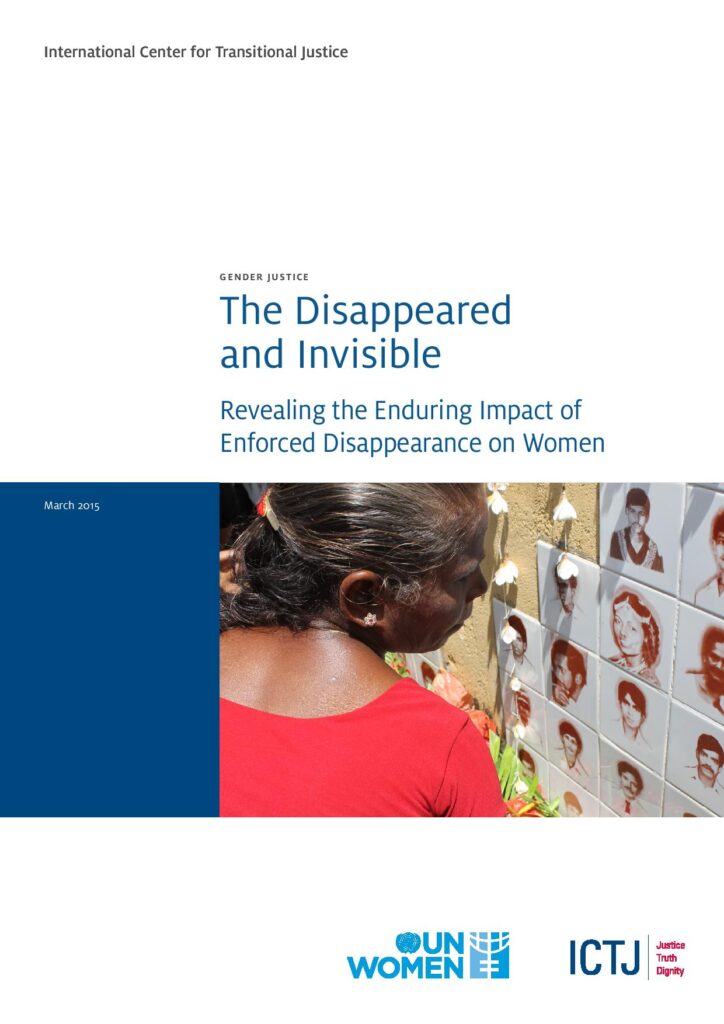
In at least 80 countries around the world, tens of thousands of individuals have been disappeared in contexts of conflict or repression. These enforced disappearances are typically used to eliminate political opponents in secrecy, without witnesses, survivors, or physical evidence. Relatives and targeted communities are left in fear and uncertainty, risking abuses themselves when they […]
GENDER EQUITY AND MALE ENGAGEMENT: IT ONLY WORKS WHEN EVERYONE PLAYS

In this report, ICRW provides a historical overview of the nearly 40-year-old male engagement field, as well as guidance for stakeholders on how to support the funding, design, and implementation of programming that engages men and boys in transforming gender norms. The insights we offer are drawn from published and grey literature, key informant interviews […]
Lifelong Wellbeing for Survivors of Sex Trafficking: Collaborative Perspectives From Survivors, Researchers, and Service Providers
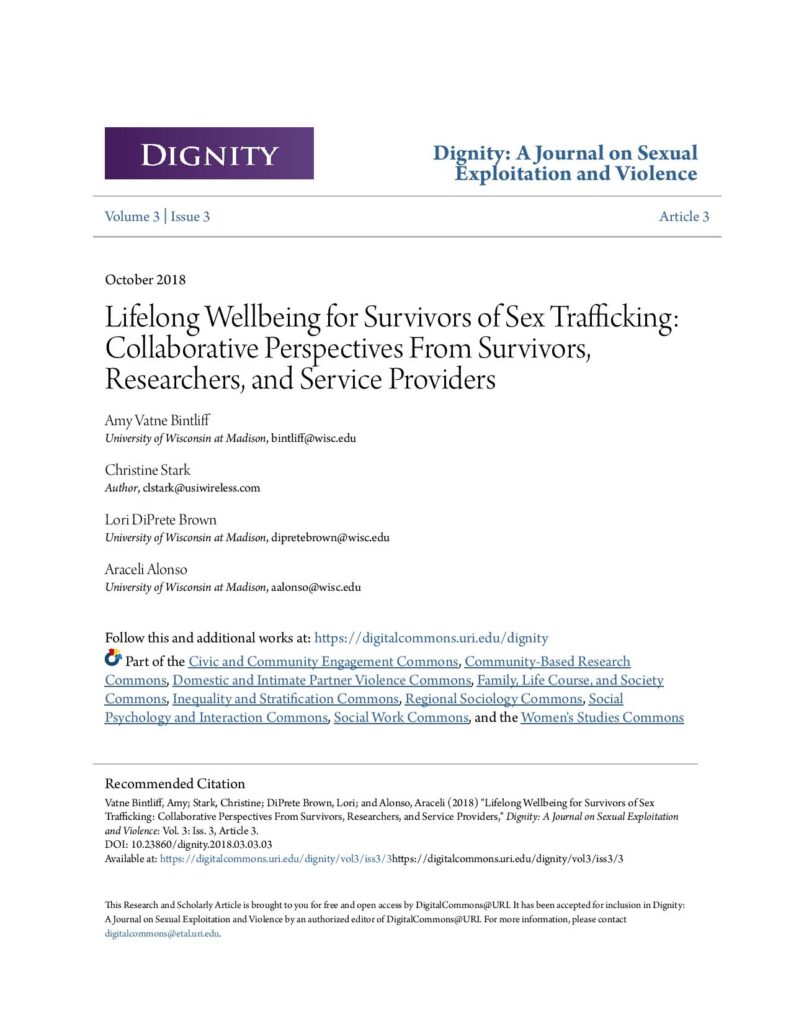
This article presents a collaborative effort designed to inform policy and practice related to the wellbeing of survivors throughout the life course. Through an interactive two-day workshop and subsequent consultations, this effort engaged a network of scholars, practitioners, and survivors, and employed a participatory model of wellbeing that was developed for use with highly marginalized […]
The future of women at work: Transitions in the age of automation

In the automation age, women face new challenges overlaid on long-established ones. Technology adoption could displace millions from their jobs; many others will need to change the way they work. Globally, 40 million to 160 million women may need to transition between occupations by 2030, often into higher-skilled roles. If they make these transitions, women […]
Rights Eroded: A Briefing on the Effects of Closing Space on Women Human Rights Defenders
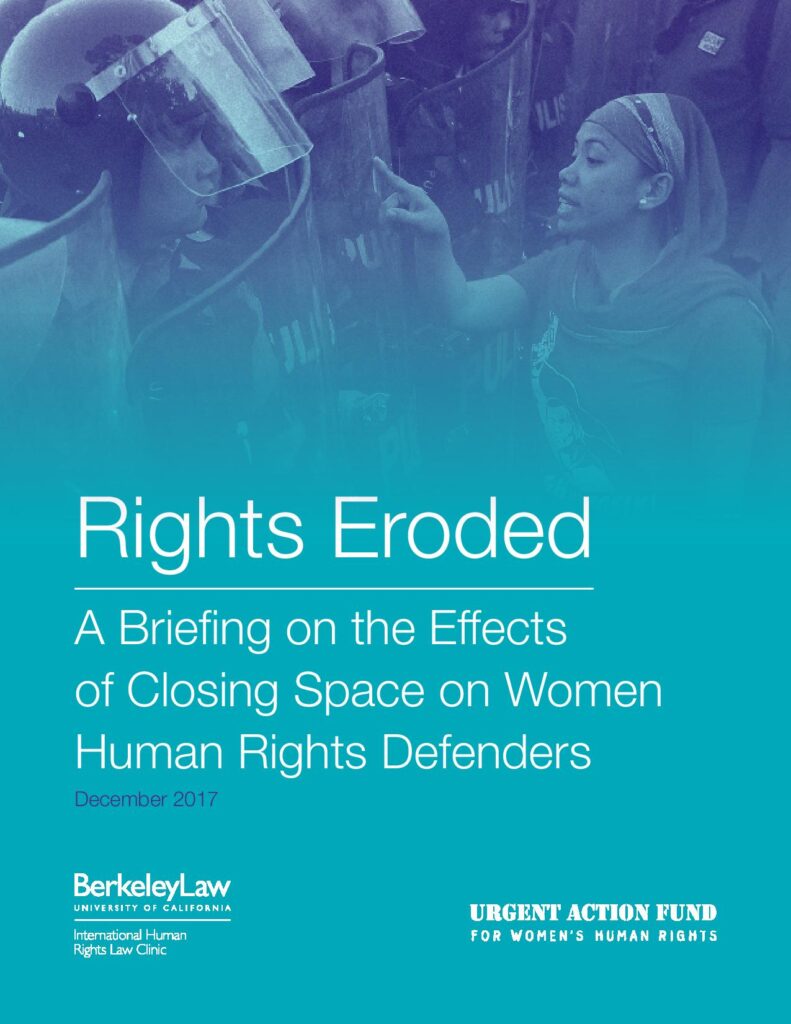
Using a human rights framework and gender analysis, this briefing report sheds light on the common challenges of closing space that frontline WHRDs face—as well as on their strategies for resistance. It is based on interviews with representatives of two women’s funds, and twenty four representatives of women’s and LGBTQI+ civil society networks, coalitions, and […]
GLOBAL MULTIDIMENSIONAL POVERTY INDEX 2019: ILLUMINATING INEQUALITIES
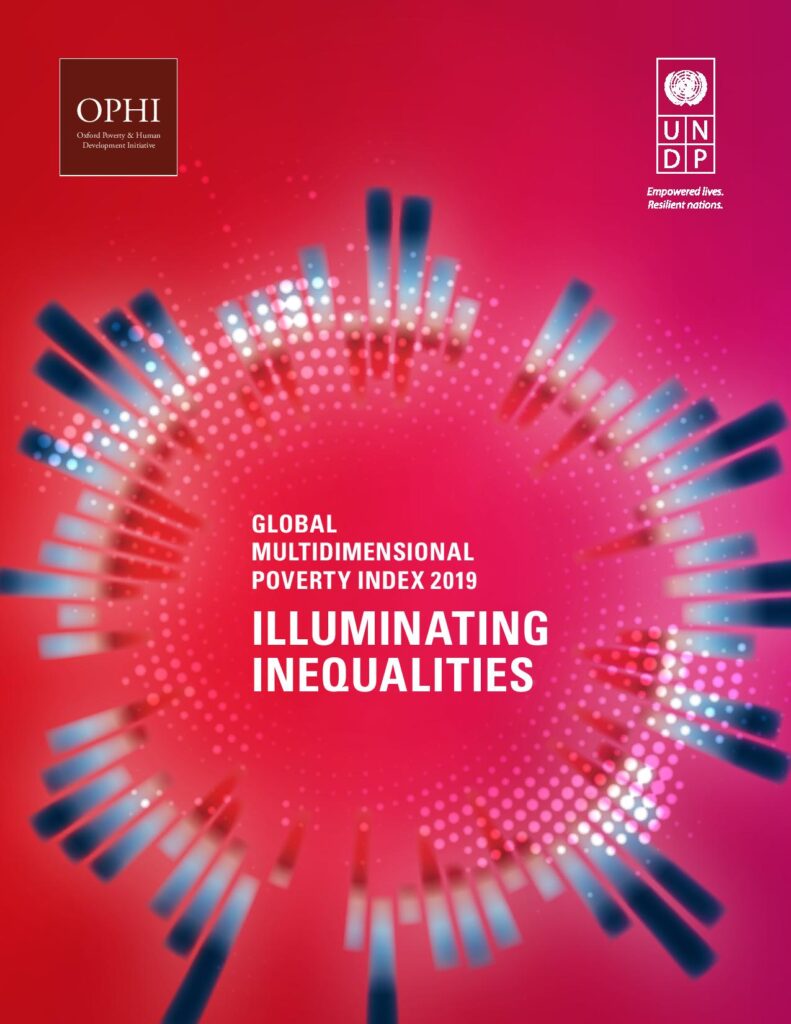
The global MPI scrutinizes a person’s deprivations across 10 indicators in health, education and standard of living and offers a high-resolution lens to identify both who is poor and how they are poor. It complements the international $1.90 a day poverty rate by showing the nature and extent of overlapping deprivations for each person. The […]
